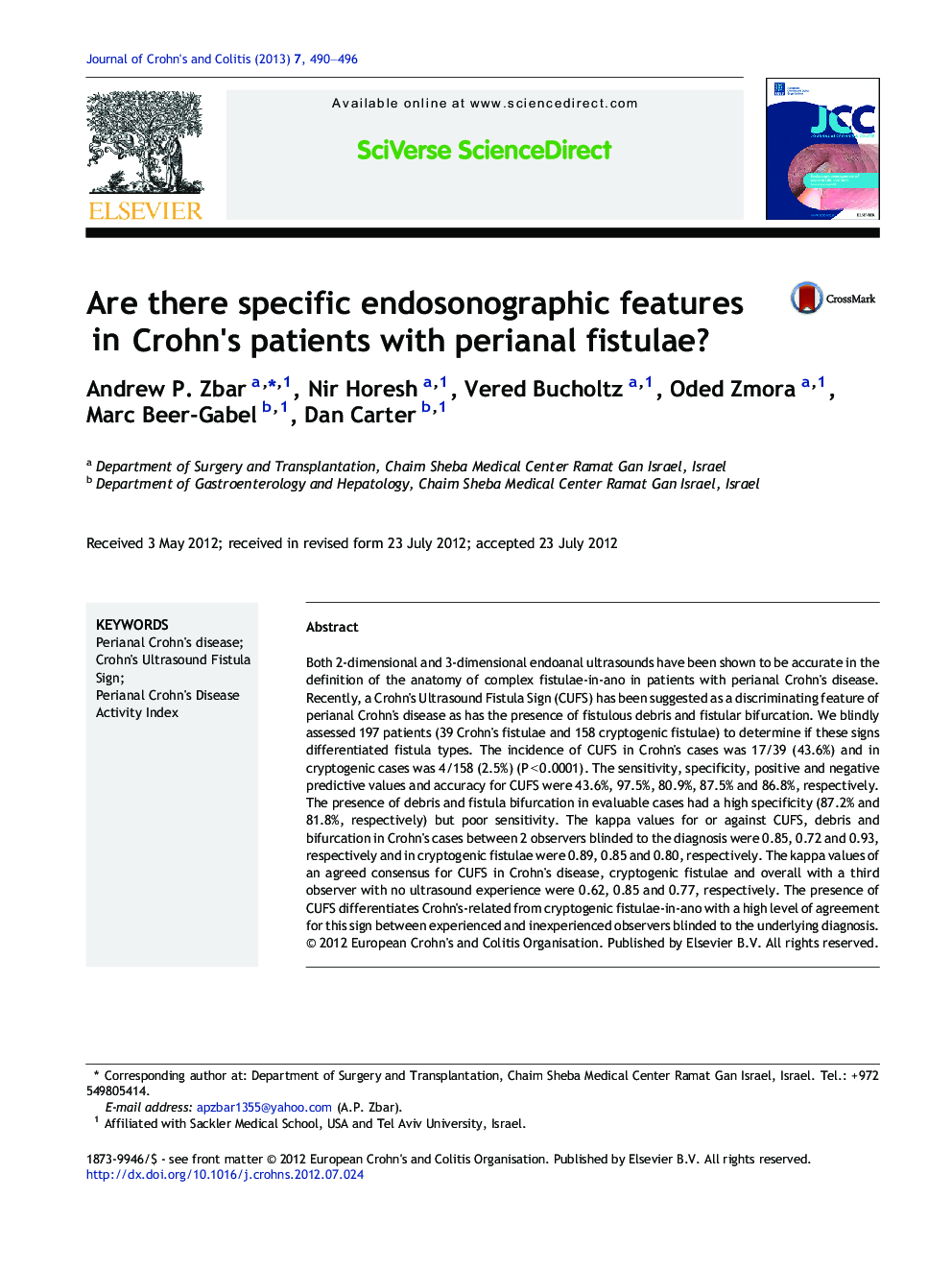| Article ID | Journal | Published Year | Pages | File Type |
|---|---|---|---|---|
| 6099571 | Journal of Crohn's and Colitis | 2013 | 7 Pages |
Abstract
Both 2-dimensional and 3-dimensional endoanal ultrasounds have been shown to be accurate in the definition of the anatomy of complex fistulae-in-ano in patients with perianal Crohn's disease. Recently, a Crohn's Ultrasound Fistula Sign (CUFS) has been suggested as a discriminating feature of perianal Crohn's disease as has the presence of fistulous debris and fistular bifurcation. We blindly assessed 197 patients (39 Crohn's fistulae and 158 cryptogenic fistulae) to determine if these signs differentiated fistula types. The incidence of CUFS in Crohn's cases was 17/39 (43.6%) and in cryptogenic cases was 4/158 (2.5%) (PÂ <Â 0.0001). The sensitivity, specificity, positive and negative predictive values and accuracy for CUFS were 43.6%, 97.5%, 80.9%, 87.5% and 86.8%, respectively. The presence of debris and fistula bifurcation in evaluable cases had a high specificity (87.2% and 81.8%, respectively) but poor sensitivity. The kappa values for or against CUFS, debris and bifurcation in Crohn's cases between 2 observers blinded to the diagnosis were 0.85, 0.72 and 0.93, respectively and in cryptogenic fistulae were 0.89, 0.85 and 0.80, respectively. The kappa values of an agreed consensus for CUFS in Crohn's disease, cryptogenic fistulae and overall with a third observer with no ultrasound experience were 0.62, 0.85 and 0.77, respectively. The presence of CUFS differentiates Crohn's-related from cryptogenic fistulae-in-ano with a high level of agreement for this sign between experienced and inexperienced observers blinded to the underlying diagnosis.
Keywords
Related Topics
Health Sciences
Medicine and Dentistry
Gastroenterology
Authors
Andrew P. Zbar, Nir Horesh, Vered Bucholtz, Oded Zmora, Marc Beer-Gabel, Dan Carter,
